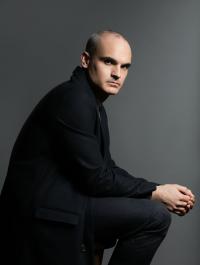There are no limits to our verbs, our forms:
think of the knife
that slits an orange or bundled iris stems, the one strapped
to the rooster’s varnished spur. The dagger, poniard, dirk.
Edge that snips the line, whittles an owl, juliennes, traces a lip.
A cut, an incision, a gouge. In Sudan, the story goes, when the slogan
of reform was The Future’s in Your Hands, men scavenged the streets
waving machetes, hacking off hands above the wrist, asking
How will you hold the future now? The stiletto, the skean, the scythe,
The choosing, the mark, the tool. Beneath a concrete bridge,
shirtless & drunk, a boy works his way through the swallows’ nests,
slashing until each mud cone-shape drops into the river, dissolves.
Yet to say so is hardly enough. To say pigsticker’s, bayonet, shiv.





